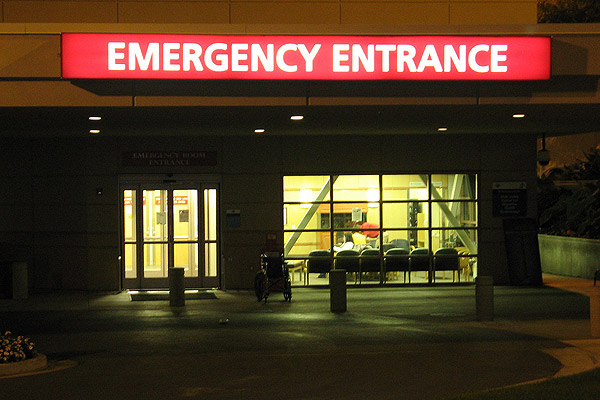
Pat Quinn wants to cut the state's Medicaid bill by $2.7 billion. So it's an enormous cut of a growing program, which has grown substantially in this century: "Illinois’ Medicaid enrollment rose rapidly during the first part of the current decade. Between 2002 and 2006, enrollment jumped 26.2%, the 6th biggest increase of any state…. State officials maintain that most of the growth in Medicaid enrollment in the past ten years—from 1.5 million recipients to 2.5 million—has stemmed from increased enrollment in existing programs." Kristen Schorch has the current numbers.
One problem is obviously the economy: with more people out of work, more people go on the Medicaid rolls. But another problem is the decline in employer-sponsored health care, which has plummeted over the past 30 years. John Schmitt of the Center for Economic and Policy Research tallied up the numbers, and they're down across the board—not just for the poor, but for all broad income brackets:
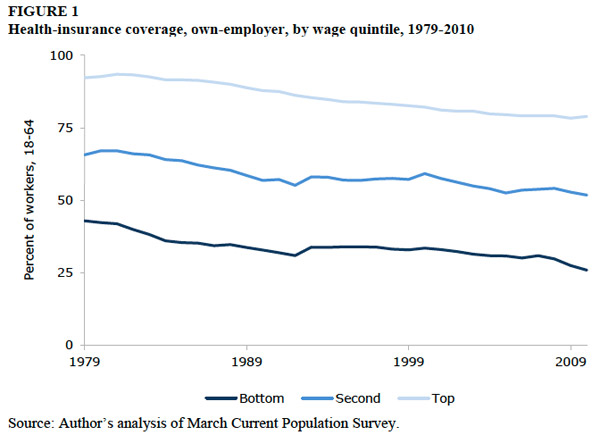
The difference between the lowest quintile and the other two is substantial, but all three have dropped: 17.0 percent, 13.8 percent, and 13.3 percent in ascending order.
But more women are in the workplace; if you're in a two-income household, you've probably compared health plans and chosen one or the other. That's increased coverage for the top quintile, but it's actually dropped for the other two:
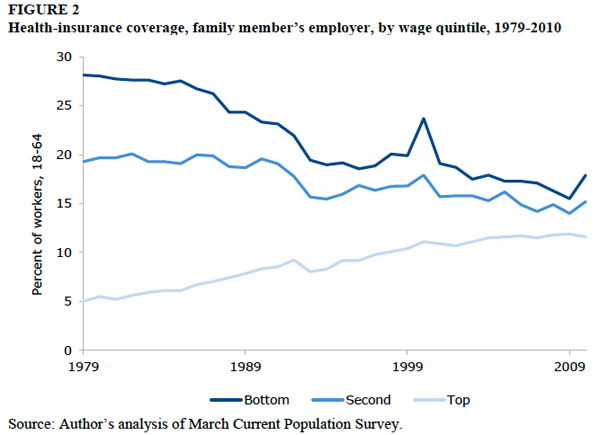
Private insurance is actually at highs for each quintile since 1979, with the bottom quintile at the highest—but it's just hovering around eight percent. All those people are going exactly where you'd expect. Either to Medicaid:
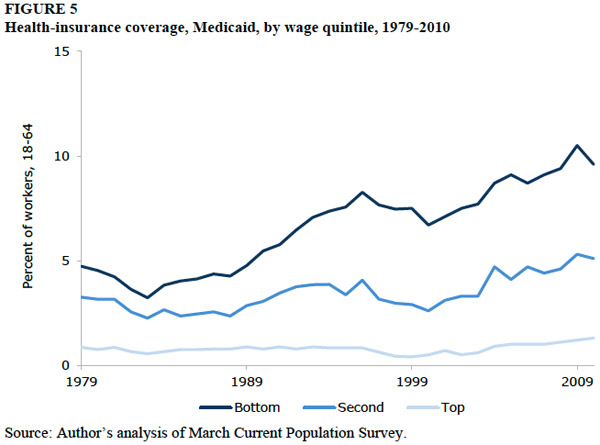
Or just not having health insurance at all.
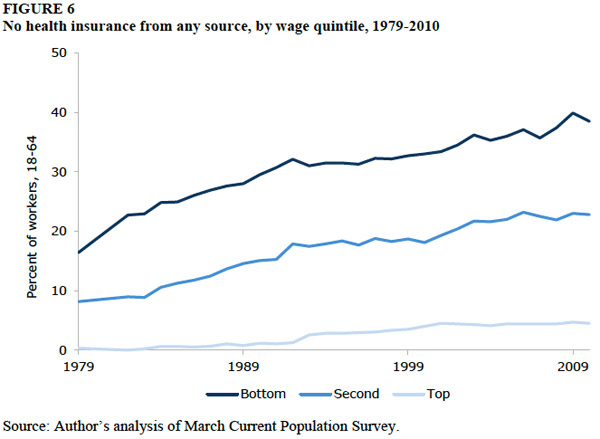
The author estimates that 40 percent of Latino workers—not all Latinos, but specifically wage-earners—are uninsured. That's nearly twice the rate of African-Americans, and almost four times the rate of whites.
And as Micah Maidenberg notes in Crain's, the problems don't just fall on some people or states harder than others, they fall on some hospitals much harder than others:
Sixty percent of Mount Sinai patients were covered by Medicaid during the hospital's 2011 fiscal year. Mr. Channing estimates a $2.7 billion cut would mean an $85 million loss for Mount Sinai, forcing the hospital to “intensely” review service lines, including its trauma center, emergency department and obstetrics wing.
There do seem to be inefficiencies in the state's Medicaid program that experts have focused on, including substantial spending on inpatient care. But even in a perfect world those aren't going to get to $2.7 billion. It's a very difficult problem, and in many respects the state's hands are tied: the state can't really cut enrollees; it's been entangled in a legal back-and-forth about the means by which the state checks residency and eligibility; the state's reimbursement rates to providers are already very low; and the federal government's reimbursement rate to the state is also one of the lowest in the country. Even increase employment, looking at the trends, will only put a dent in it.
Photograph: Rosser312 (CC by 2.0)


